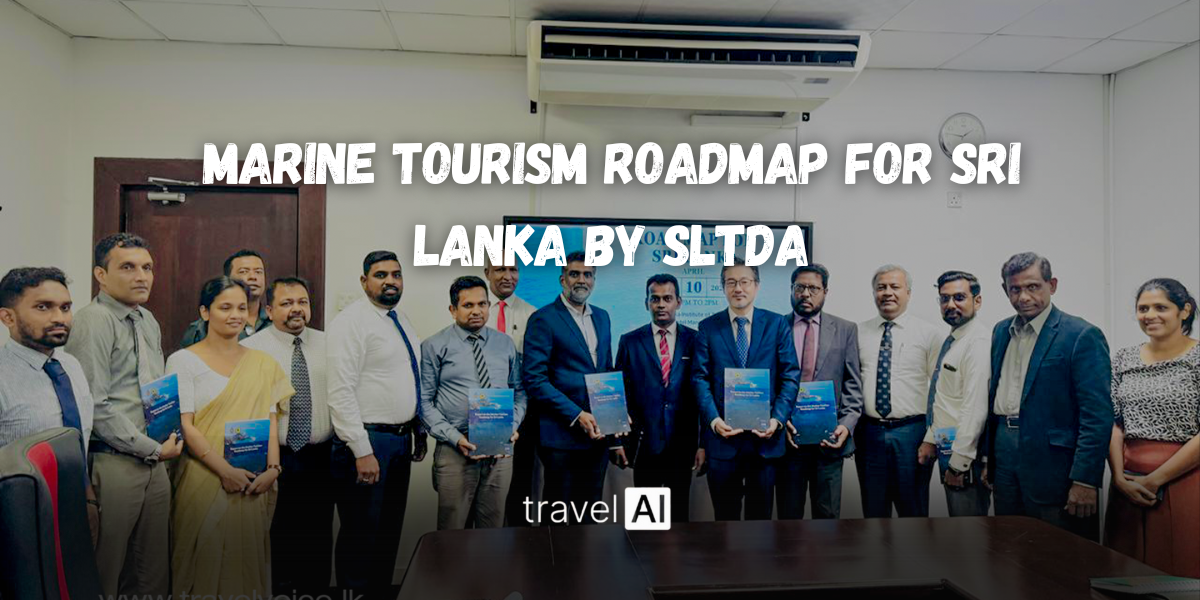Sri Lanka has taken a significant step forward in its tourism development journey with the official launch of the Marine Tourism Roadmap, an ambitious strategy designed to unlock the vast potential of the country’s marine resources while ensuring environmental sustainability. Spearheaded by the Sri Lanka Tourism Development Authority (SLTDA) and supported by the Asian Development Bank (ADB) under its technical assistance program TA9881 SRI: Supporting Tourism Resilience, the initiative lays the foundation for a robust and inclusive blue economy.
A Collaborative, Data-Driven Approach
The Marine Tourism Roadmap is the result of rigorous groundwork that included extensive data collection, stakeholder consultations, and site visits carried out by ADB-appointed international consultants in collaboration with SLTDA officials. The strategy was validated by the Marine Tourism Steering Committee, which comprised representatives from 18 marine-related public and private sector institutions, including the Presidential Secretariat and the Ministry of Tourism.
One of the key figures behind the strategic design was Aleksandra Dragozet, CEO and Founder of Sea Going Green, who provided international expertise to ensure alignment with global best practices in sustainable marine tourism.
Balancing Conservation with Economic Growth
At the heart of the roadmap is a balanced approach to tourism and conservation, ensuring that economic development does not come at the cost of marine ecosystem health. The strategy promotes eco-friendly marine tourism activities such as:
- Scuba diving and snorkeling
- Shipwreck exploration
- Marine wildlife watching
These activities are designed to boost local livelihoods while preserving Sri Lanka’s rich marine biodiversity, including coral reefs, marine mammals, and fragile coastal habitats that are increasingly under threat due to climate change and human activity.
Destination Zoning: Developed vs Emerging Regions
The roadmap categorizes Sri Lanka’s coastal tourism destinations into two main segments:
- Established Marine Tourism Regions: Kalpitiya, Galle, and Trincomalee — regions with well-developed infrastructure and visitor experiences.
- Emerging Tourism Hubs: Mannar, Jaffna, and the North-Eastern coastal belt — areas identified for their potential to grow into major marine tourism attractions.
It’s noteworthy that Sri Lanka’s maritime area is nearly seven times its landmass, presenting a largely untapped resource for sustainable tourism development.
Key Implementation Strategies
The Marine Tourism Roadmap provides a strategic framework for both short-term and long-term development, including:
- Infrastructure development tailored for sustainable marine tourism
- Community involvement and skills development to support local employment
- Marine conservation programs to ensure ecological resilience
- Enhanced visitor experiences through responsible tourism practices
Inclusive Development Through Nationwide Participation
The roadmap is a testament to the power of collaboration. It reflects insights from coastal stakeholders in areas like Negombo, Kalpitiya, Mannar, Jaffna, Mullaitivu, Trincomalee, and Galle, ensuring diverse representation. This nationwide stakeholder engagement guarantees that the roadmap aligns with local needs and global standards, setting the stage for Sri Lanka to emerge as a leading marine tourism destination in South Asia.
Sources:
- Sri Lanka Tourism Development Authority (SLTDA): www.sltda.gov.lk
- Asian Development Bank (ADB) – TA9881 SRI Program: www.adb.org
- Sea Going Green – Sustainable Tourism Expertise: www.seagoinggreen.org

